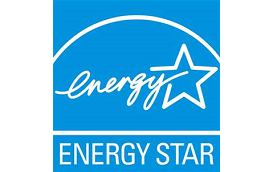The Energy Star program is a joint venture between the Department of Energy and the Environmental Protection Agency. The program was designed to promote the use of energy efficient products and the guidelines developed here in the United States are now also used in Canada, the European Union, Australia, New Zealand, Japan and Taiwan. While there are other and more widely adopted energy efficiency standards in some of these regions such as the UK’s Energy Savings Trust, Energy Star certification is still an important consumer aid.
How Does Energy Star Certification Work?
The Energy Star program sets the standard for energy efficiency in a wide variety of commercial and consumer products. This includes larger appliances such as furnaces, televisions and dishwashers, through to small items such as blenders and battery chargers. The Energy Star standards were designed to identify products which save energy and money. This is based on both the initial purchase cost and the operating costs over time.
There are a number of steps for certification in the Energy Star program. First the energy standards are set for each specific category of products. These energy standards were designed to determine a reasonable percentage of the most energy efficient products available on the market. For example, 35% of the gas furnaces available in 2008 met the efficiency requirements of Energy Star.
The Energy Star program also requires testing to ensure that any eligible products do meet the performance requirements. Manufacturers must also agree to provide a warranty for their qualified products. There is no specific length of this warranty.
The Requirements for Product Testing:
In the past, the product testing for Energy Star certification was performed by the manufacturer of the product and there was limited oversight by Energy Star. There were no independent verification for reported performance figures or eligibility claims. Unless an outside agency or competitor flagged an erroneous claim, the manufacturer was able to make any claims of energy efficiency. This margin for manipulation promoted a number of complaints when consumer report agencies performed independent testing.
In 2010, the Government Accountability Office performed an audit of the Energy Star program and determined that it was susceptible to fraud and misuse. The DOE and EPA quickly responded and implemented more stringent testing more closely mimic real world conditions. The methodology and specific testing requirements are now maintained by the DOE and are outlined in the 10 CRF part 430 Appendix N.
The Standards Applied to Furnaces:
There are Energy Star standards for both gas and oil furnaces. Gas furnaces must have a minimum 90% Annual Fuel Utilization Efficiency (AFUE) rating, while oil furnaces must be at least 85% AFUE rating to qualify for certification. Additionally, gas furnaces need to have an average Eae (annual auxiliary electrical energy) consumption of 800 kilowatt hours per year or less. This rating is the total electrical energy supply for the furnace in a full year.
There are also standards for boilers of 85% AFUE, split system central air conditioners of greater than 14.5 SEER and greater than 12 EER, and indoor heat pumps have a greater than 14 SEER, greater than 11 EER and greater than 8 HSPF rating to qualify for certification.
